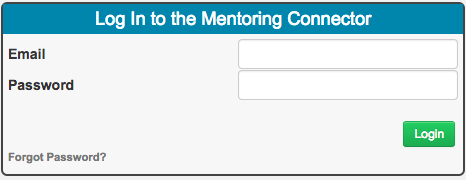Program Corner: Using Technology to Improve Mentor Recruitment
 In this post, I have asked Katy White, who is a consultant with Dare Mighty Things (www.daremightythings.com), to share her insights on how technology can assist program managers in recruiting mentors. Katy is steeped in mentoring knowledge from years of providing training and technical assistance to mentoring programs across the country. With Caregiver’s Choice, a national mentoring initiative sponsored by DHHS, she led child enrollment and supported child outreach efforts, working with vulnerable populations. She leads the training and e-Community of Practice activities supported by an OJJDP grant to help the Amachi Mentoring Coalition Program build state wide mentoring coalitions. She is also consulting with Big Brothers Big Sisters Lone Star (BBBSLS) to design and pilot an innovative, holistic approach to improving life outcomes for children and youth at-risk of early academic failure, truancy, or adjudication. She will be co-presenting on this initiative at the MENTOR Summit in Washington DC next week. ~ Dave Van Patten
In this post, I have asked Katy White, who is a consultant with Dare Mighty Things (www.daremightythings.com), to share her insights on how technology can assist program managers in recruiting mentors. Katy is steeped in mentoring knowledge from years of providing training and technical assistance to mentoring programs across the country. With Caregiver’s Choice, a national mentoring initiative sponsored by DHHS, she led child enrollment and supported child outreach efforts, working with vulnerable populations. She leads the training and e-Community of Practice activities supported by an OJJDP grant to help the Amachi Mentoring Coalition Program build state wide mentoring coalitions. She is also consulting with Big Brothers Big Sisters Lone Star (BBBSLS) to design and pilot an innovative, holistic approach to improving life outcomes for children and youth at-risk of early academic failure, truancy, or adjudication. She will be co-presenting on this initiative at the MENTOR Summit in Washington DC next week. ~ Dave Van Patten
mentor2.0 : Using Technology to Improve Mentor Recruitment
by Katy White
When mentoring program staff hear that they need to use more technology in their mentor recruitment efforts, their minds often go straight to social media and using Facebook to recruit. However, using technology is about much more than that. When used to its fullest extent, technology can help to make mentor recruitment a more effective and efficient process for a mentoring program.
During my recent work with Big Brothers Big Sisters Lone Star (BBBSLS), the staff began to ask the question, “How do we recruit and retain high quality mentors?”
We in the field know, this is no small task. Mentor recruitment often involves a time-consuming process of building the trust and relationships necessary to find quality volunteers equipped to commit to work with youth for the long term. Coupling this fact with the reality that many mentoring programs find themselves working with shrinking budgets, limited staff, and skinny resources to invest, only heightens the matter. So the challenge that BBBSLS embarked upon was to find out how to recruit mentors in a way that engaged the mentors without taxing the resources of the organization.
The first step for BBBSLS was to learn more about the volunteers in their community. To do so, BBBSLS employed Experian Simmons, an international credit reporting and marketing company, to share market research on existing BBBSLS mentors. The purpose of this research was to identify the characteristics of high-performing mentors (those matched for over two years) in order to target recruitment efforts to reach mentors who are more likely to maintain strong engagement with the program.
High-Performing Mentor Traits
- 66% use the Internet at home
- 67% regularly check email
- 66% use social networking
In addition to the key findings for how to initially engage with mentors using technology and social media, the research collected anecdotal information from current mentors regarding the factors that kept them engaged with the program. From this, we learned that mentors often feel isolated and alone when it comes to addressing challenges within their match. Mentors who were engaged in match activities and had regular contact with their case manager and other mentors, reported having positive mentoring experiences. Even so, a majority of mentors did not participate in match activities, often stating that the activities were not convenient to their schedule or their location. Now, the BBBSLS staff was aware that they must find a way to engage mentors through virtual means that were conducive to their schedules.
With this greater insight, BBBSLS went to work implementing several changes to the way they interacted with potential and current mentors.
- They started by increasing their Facebook and Twitter presence for recruiting mentors and promoting events.
- They also fine-tuned the approach used with corporations to develop internal champions who are equipped with appropriate, effective messaging, and provide them with email language and marketing materials to recruit from within their organizations.
- Then BBBSLS took things to the next step with their newest program, Mentor2.0. This program uses structured email exchanges to enhance the match relationship between adult mentors and high school student mentees. Emails and once-per-grading period, face-to-face group events follow an established curriculum focused on helping the high school 9th – 12th graders do well in school, and engage in college preparation and career exploration. This program involves entire classrooms of students at a school, as each student has his/her own mentor—writing back and forth to one another each week, ideally for all four years of high school.
Using what was learned in the research project, BBBSLS implemented new recruitment strategies in the mentor2.0 program. Knowing that mentors find value in feeling connected to each other during the match process, BBBSLS focused their recruitment efforts on corporations where they could bring in a group of mentors who could work together in adopting a classroom, or in some cases, an entire school. With the support of BBBSLS, internal champions within an organization can use email campaigns to recruit their colleagues and follow up using social networking to engage each other through the recruitment process and offer each other support during the course of the match.
Another unique factor of the program is the web-based platform used in every step of the mentor recruitment and match support process. This platform was adapted as part of a partnership with iMentor and allows the BBBSLS staff to track the mentor application process and offer follow up contacts with potential volunteers who are working on their applications. The platform also offers an online matching process for staff, generating a list of potential mentees, including side-by-side match comparisons, for each incoming mentor. The tool allows staff to keep track of emails between the matches, and event participation. This streamlines the recruitment, matching, and match support process so that staff can focus their efforts of deepening relationships and serving additional youth.
To learn more about the work that BBBSLS is developing and implementing in their mentor research project, please contact Jason Ray (jray@bbbstx.org). The mentor2.0 program at BBBSLS is headed by James Nunn (jnunn@bbbstx.org) who is more than happy to share their experience partnering with iMentor and implementing a technology-based program within their traditional mentoring model. Finally, if you would like to learn more about iMentor and their web-based platforms, you can reach out to Adrienne Kupper, Managing Director of iMentor Interactive (adrienne@imentor.org).
There is still a lot to learn about how to get mentors in the doors of our mentoring organizations. Effective mentor recruitment often requires several points of engagement and social media certainly provides one significant avenue; however, it will be difficult to determine where the tipping point is in drawing potential mentors from the outside, in, and engaging them in your organization. The more we share and learn from programs like BBBSLS, who are willing to explore how to better engage their mentors and how technology can help in the process, we can all have a better picture of who makes a good mentor and how we keep them engaged.










